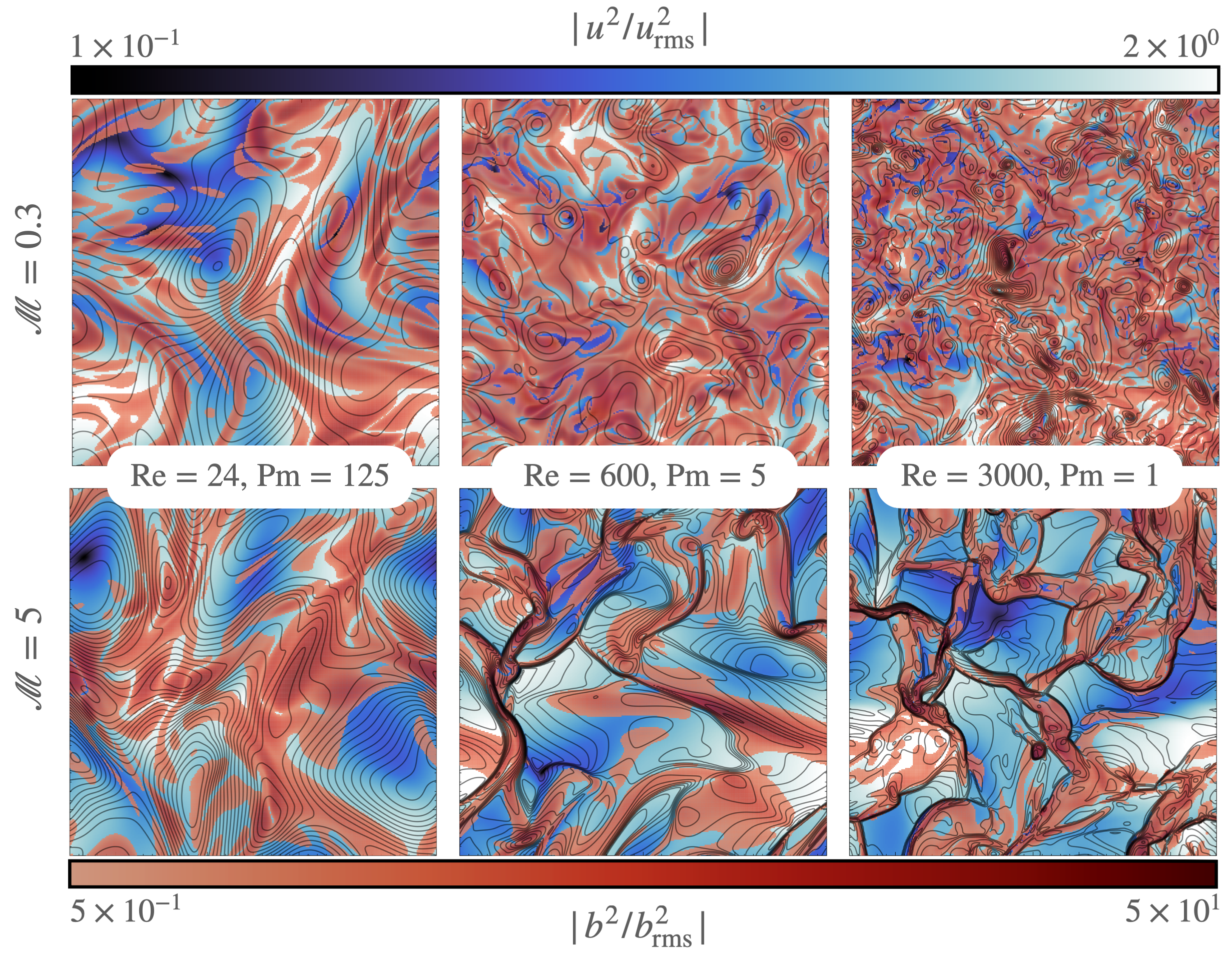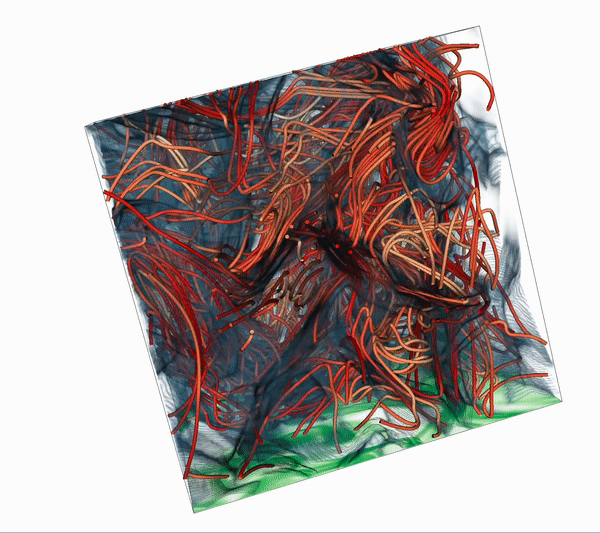The turbulent dynamo explains how weak, seed magnetic fields produced in the early Universe, are amplified by turbulent motions to the levels we observe today. At first, turbulent motions grow magnetic fields exponentially fast in time, until magnetic fields reach close equipartition with turbulent kinetic fields, at which point magnetic fields saturate and are subsequently maintained by background turbulent fields.
Morphology of Magnetic Structures in Turbulent Dynamos
In Kriel+2023 in prep. (expected Sept. submission) we use new methods for characterising magnetic structures in plasmas, to established a clear relationship between the local morphology of magnetic fields and global flow properties. We show that turbulent, subsonic environments (top row panels), like the warm phase of the ISM, for example, produce magnetic fields that form folded structures that concentrate magnetic energy on the smallest scales allowed by dissipation processes. Conversely, in supersonically-moving (bottom row panels) flows, like in the cold phase of the ISM, shocks violently reorganise magnetic fields into larger-scale structures associated with denser regions of plasma, which appear to become independent of magnetic dissipation.
Effect of Compressibility in Turbulent Dynamos
In Beattie+Kriel+2023 in prep. (expected Sept. submission) we explain how compressibility reduces the overall dynamo efficiency (growth rate and saturated energy level) by enabling the exchange of kinetic energy between solenoidal and compressive motions. While compressed regions of plasma can lead to growth in magnetic fields, these moments of growth are short-lived (compression is soon followed by dilation), and leaves a net-negative impact on the growth of magnetic fields.


